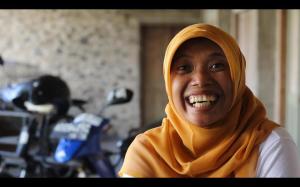Indonesia became one of countries that experienced a boom in the use of social media. Facebook and Twitter users in Indonesia are always in the top ranking of the world. This phenomenon allowed for the emergence of citizen journalism that, consciously or not, represents a new model of documentation by the public, known as crowd-sourcing.
Indonesian public are already familiar with database crowd-sourcing, not only for collecting information, but also for managing public campaign and people action. They are using the Facebook and Twitter to fight against corruption, challenge laws that do not served people’s justice, and help disaster victims.
One of the most popular social media to support disaster risk reduction in Indonesia is @jalinmerapi. JALIN Merapi or Jaringan Informasi Lingkar Merapi (information network around Merapi) is a group of community radios that live around Merapi. Merapi is one of the most active volcanos in the world. The biggest eruption occurred in 1006, 1786, 1822, 1872, and 1930. Small eruptions happen every 2-3 years. Last eruption in 2010 was one of the major impacts.
The account of @jalinmerapi was first created on October 25, 2010, the day before the eruption. Merapi is located in two provinces, i.e. Yogyakarta and Central Java. Thousands of people live in the vicinity. The nearest village is just four kilometres from the summit of the mountain, or about 25 kilometres from the district capital. It means that all stakeholders need to have a good disaster management, to ensure the safety of every single resident.
Disaster is everybody’s business. During eruption, public becomes the citizen journalist. They use the social media and some ICT platform like community radio, website and short message (SMS) to share anything about the eruption: from the information about refugee’s needs and shelters, to how to provide assistance for people who want to help the survivors. Twitter bridge between needs and donors. It also became the fastest informant, since it updates directly and spreads immediately just after the incident.
Community-based information network is an example of how the public can play an active role in tackling the impact of disasters. Nowadays, this system is being a model of the use of social media and information technology for disaster risk reduction at the national level.
Key words: Social media, crowd-sourcing, disaster, citizen journalist.




























